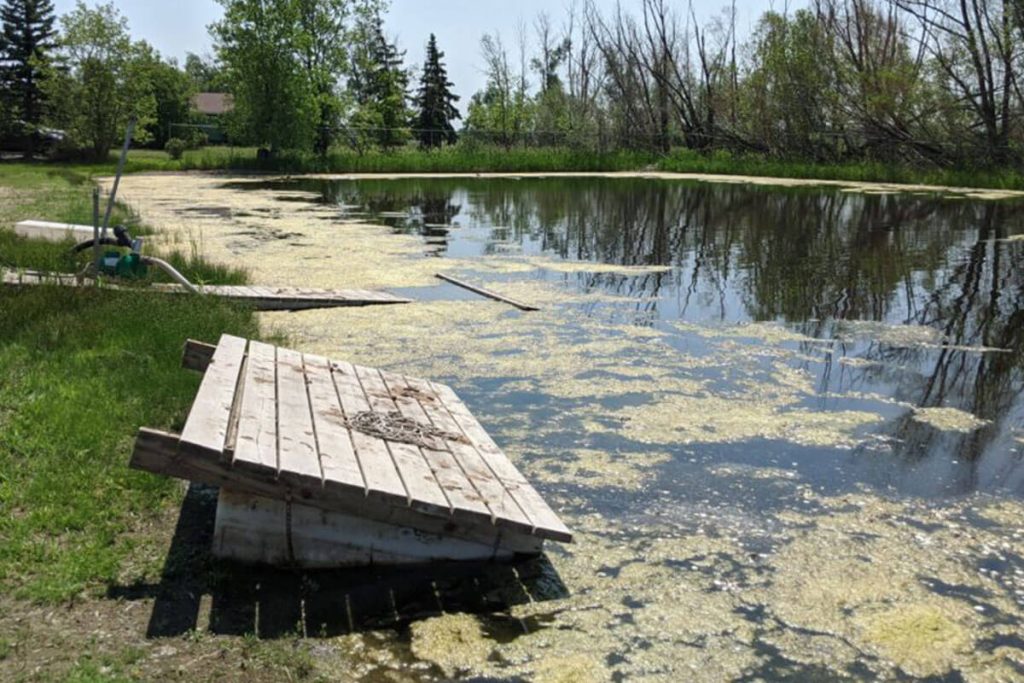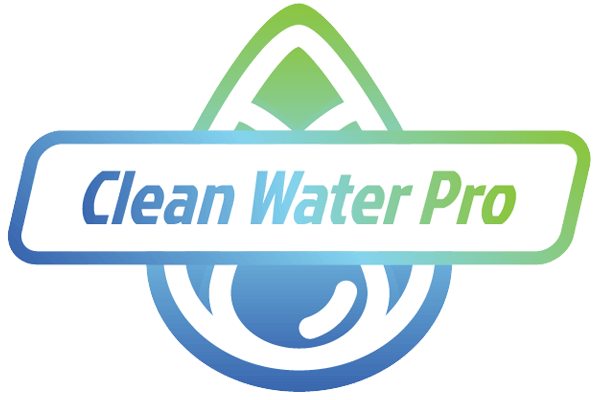Is Your Pond Unsightly or Odorous?
It sounds like you may be aware of a stagnant water body.
Algae, aquatic weed growth, and noticeable muck levels at and near the shoreline are characteristics of stagnant water. Stagnant water also stinks and is unpleasant to look at.
Stagnating retention ponds or lakes are an even bigger problem for those who live directly next to a retention pond or lake. See our blog post, The Health Risks Associated with Stagnating Water in Your Backyard or Municipality, to learn more.
What Can Be Done?
Start at the root cause: depleted dissolved oxygen (DO) levels.
Stagnant water is in decline because there is not enough dissolved oxygen in the water to sustain the type of bacteria required to maintain a healthy and vibrant pond or lake. A retention pond or lake can become unhealthy because the water body is not moving, or at the very best, moving slowly.
Water that doesn’t move much starts to develop warm spots at the top and cooler spots at the bottom. As the summer begins to heat, these temperature differences are more prominent. A sharp thermocline develops within the water body where the deepest water is colder and anaerobic.

The anaerobic bacteria that live at the bottom of the lake are the ones that release odorous gasses and cause your pond to stink. Refer to our blog post titled, Why is Dissolved Oxygen Important for Ponds, Lakes, and Dugouts? to learn more about dissolved oxygen.
Low dissolved oxygen levels in your retention pond, dugout, or lake will eventually lead to the death of fish, frogs, crayfish, and more. Low dissolved oxygen levels or anaerobic conditions will reduce the beneficial bacteria that consume the extra nutrients floating in your water, creating muck.
More muck along the lakebed and the shoreline make the perfect bed for aquatic weeds. As your water body gets cloudier from muddy bottoms, you will see the formation of green algae on the surface of your once beautiful water body.
How Can You Increase the Dissolved Oxygen Levels?
Water aeration systems reverse the adverse effects of stagnating water. Water aeration is simply the process of adding diffused oxygen to water.
Water aeration is most effective when the oxygen-rich air is supplied directly to the bottom of your lake or retention pond. By applying oxygen to the bottom of the pond, you remove the thermocline and activate the bacteria you want working for you. Simultaneously, you remove the anaerobic-loving organisms from the lake that produce nasty things like blue-green algae.
In stagnant water bodies, a thermocline develops towards the bottom. Water below the thermocline is colder and more anoxic than the above. By applying oxygen to the bottom of the pond, you remove the thermocline and activate the bacteria you want working for you.
Types of Water Aeration Systems for Ponds, Lakes, Dugouts, and Wastewater Lagoons.
1. Floating fountain (surface aeration, not recommended for water deeper than 4 feet): Floating fountains only circulate water within its vicinity and don’t go very deep. For shallow ponds, a couple of well-placed floating fountains can effectively aerate your water and dramatically improve your water body. When your water body is deeper, the enriched oxygen doesn’t penetrate the first thermocline and thereby doesn’t activate the bacteria required to eat the extra nutrient load in the water, resulting in a pond that will continue to deteriorate. As they are expensive to operate and plug up if the water is not clear, they are best used for aesthetics on treated ponds.
2. Coarse bubble aeration (subsurface aeration, expensive to purchase, expensive to operate and extremely noisy): Coarse bubble aeration is one form of sub-surface aeration that has been routinely used in lakes and large water bodies for years. Widely recognized as superior to most methods, it has been the method of choice as it effectively gets oxygen beneath the thermocline. The drawback for coarse bubble aeration has been the initial costs, including the cost of the equipment and freight, the incredible noise the compressor makes (similar to a jet engine), and the cost to operate (up to $4000/month for each compressor in the coldest months of winter).
3. Fine bubble aeration (subsurface aeration and the now widely recognized method for increasing dissolved oxygen levels in stagnating water bodies): Fine bubble aeration is relatively new and is now taking over as the number one aeration treatment for stagnating water bodies of all types (ponds, storm drainage systems, farm dugouts, lagoons, and lakes). Subsurface oxygen is pumped into the bottom of the water body via small and efficient compressors to special diffuser plates that create extremely fine air bubbles. For a number of reasons, this is a superior system. The equipment itself is easier to handle, less expensive to purchase and doesn’t use nearly the electricity the coarse bubble compressors use. Moreover, the fine air bubbles are more efficient at bringing up the oxygen concentration in the water, especially below the thermocline, compared to larger bubbles.
In Summary
If you happen to live by a stagnant body of water, there is a lot that can be done to improve the smell and look of the water.
There are several ways in which we can aerate the body of water. The key here is adding dissolved oxygen and movement back into the water. This can be done using a floating fountain, coarse bubble aeration or fine bubble aeration.
The common denominator between the three is aeration. Aeration is the number one component in keeping a body of water healthy, odourless, and appealing.
Have questions regarding your body of water? Contact us at info@cleanwaterpro.ca.
